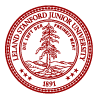Deep Learning for MIR II: State-of-the-art Algorithms
A survey of cutting-edge research in MIR using Deep Learning, presented by instructors and a lineup of guest speakers leading research in industry and academia. This workshop is meant for individuals who want to gain experience applying Deep Learning to solve a problem of their interest in MIR. Instructors will explain and demonstrate concepts in models that are used in cutting-edge research. Students will build and train state-of-the-art models using PyTorch, adapting them to a MIR-related problem of their interest. Instructors will serve as advisors to students in the course on-demand.
In-person (CCRMA, Stanford) and online enrollment options available. Students will receive the same teaching materials and have access to the same tutorials in either format. In-person students will gain access to more in-depth, hands-on 1:1 instructor discussion and feedback when taking the course in-person.
Theory includes: Generative models. Self-supervised feature learning. Multi-head attention mechanisms. Representation learning. Music-Language semantics.
Models covered includes: TCN, Transformer, Rave, Crepe, GPT, Mustango, MusicLM, etc.
Practice: music and speech recognition/synthesis, beat-tracking, music-recommendation, etc.
Prerequisites:
- Deep Learning for MIR Week 1
About the instructors
Iran R. Roman is a faculty member at Queen Mary University London, leading research in theoretical neuroscience and machine perception. He holds a PhD from CCRMA. Iran is a passionate instructor and mentor, with extensive experience teaching AI and signal processing at institutions like Stanford University, New York University, and the National Autonomous University of Mexico. He has worked with companies companies like Plantronics, Apple, Oscilloscape, Tesla, and Raytheon/BBN to build and deploy AI models. iranroman.github.io
Scholarship opportunity: https://forms.gle/sgXhUPdJhskHXFJt8


